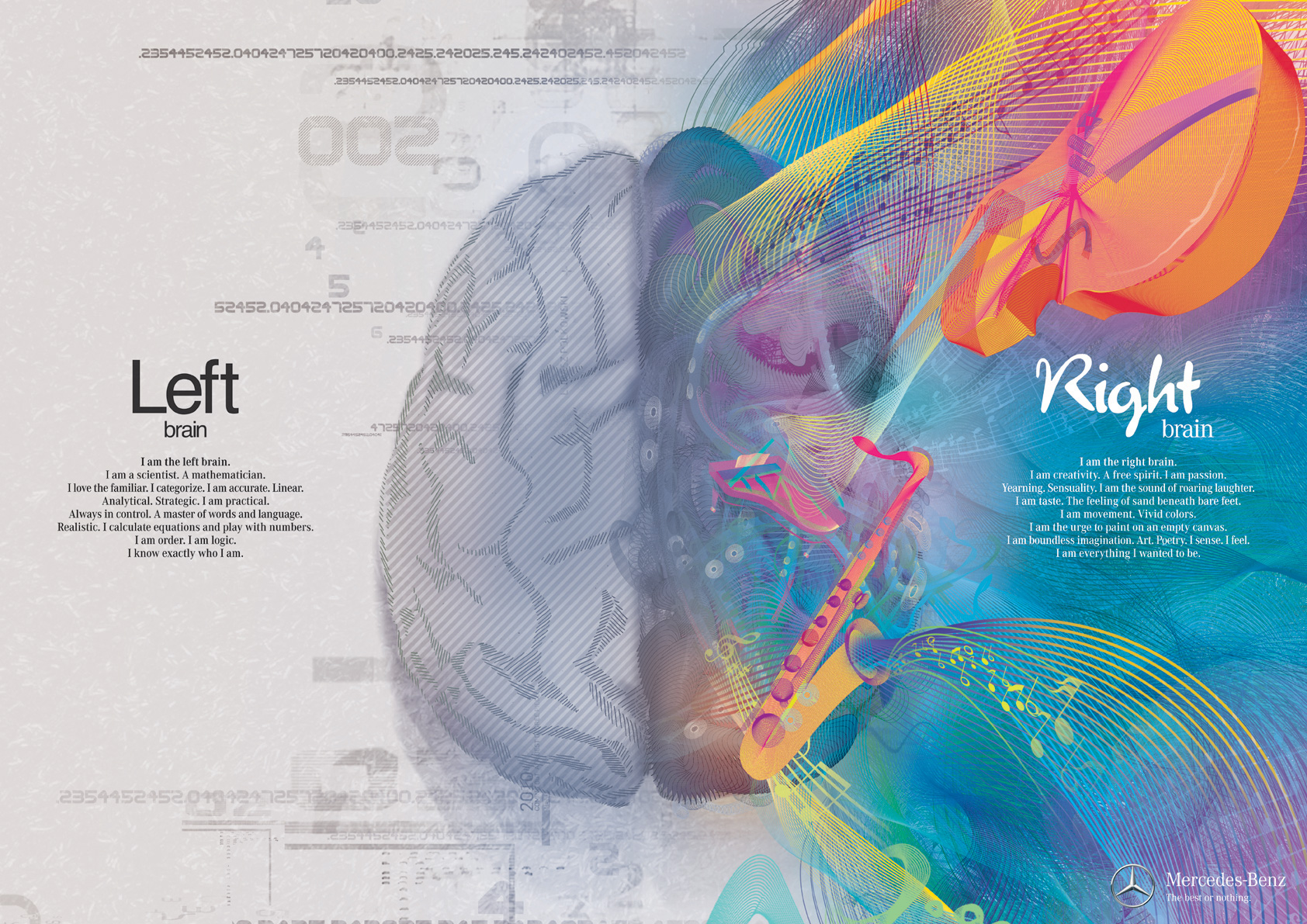Crossing the Great Divide

From a Mercedes Benz ad campaign, Illustrators: Gil Aviyam, Lena Guberman
When I first started studying spontaneous singing, it was a pretty right-brained affair. I was practicing with other singers and we were being … spontaenous.
It was great! There was all this fun — and freedom! — exploring melodies and language while playing with time and groove.
Sure, we sang exercises where I had to count measures or had a very specific singing job to accomplish, but — hey, it was improv — I broke the rules if I wanted.
After a couple of years, I felt like I was getting pretty good at this “improv” stuff. Except …
…
I could not find a way to bring my spontaneous singing into my other singing. And it felt like a right-brain, left-brain issue to me. (In hindsight, believing that there were two kinds of singing was likely a big part of my problem.)
Ask me to make up a melody or groove and I obliged happily. Any time I tried to scat or improvise in a song, however, I just … couldn’t.
I’d feel silly. Or I’d be singing somewhere where “messing up” would be inappropriate (and unappreciated) so I’d get scared.
My mind would go completely blank. I had no ideas. Worse yet (because of the panic), I couldn’t hear anything.
…
Something happened to me when I tried to improvise in a song with players that was TOTALLY different from when I improvised only with singers.
It felt like there was this giant wall in the middle of my brain. If I was singing an actual song, I couldn’t invent and if I was inventing, I couldn’t find the form or structure of a song.
It was like my spontaneous singing self lived on the wrong side of the tracks and was, if not actually unwelcome in songs with a form, made to feel she had arrived at the wrong time wearing the wrong outfit.
It didn’t help that the kind of improvising I was learning to do seemed completely separated from how my instrumentalist friends talked about and approached improvising.
I was looking for a magic doorway or secret passage that would let me reach the right side of my brain from the left and vice versa, and I couldn’t find it. For a time, I was well and truly stuck.
…
Flash forward a few years. I had finished music school and was participating in a year-long vocal improv course.
Things changed.
If I’m honest I can’t say exactly how or when, but they did.
Eventually I noticed that I could think while I was improvising. And I could hear.
I had ideas.
Improvising now felt like exploring a magical, new (or ancient) land, rather than stumbling around in the creepy basement of a haunted house.
In other words, it stopped feeling scary and started to feel exciting.
…
So what happened?
Well, I think I learned to trust myself enough to stop panicking and start listening. I stopped thinking about my spontaneous singing and my “other” singing as two different things. When I sang, I sang. Sometimes I improvised, sometimes I didn’t.
In songs, I started using the structure of a song to help me create rather than feeling like it boxed me in.
I also gave myself permission and created a space (my monthly Songtaneous sessions) where I could practice improvising.
And I practiced. And practiced (and practiced).
…
In short, I built a bridge.
See, I had been looking for a magical doorway or opening so I could move from one side of my brain to the other. What I found (through a lot of practice) was a bridge that connected the two. (This makes complete sense; music is one of the only activities that engages the whole brain.)
Now when I improvise, I feel like I am standing in the middle of a bridge and ideas come to me from both sides of my brain.
I never had to travel between my right and left brain or cross some great (and imaginary) divide. I had to learn to build a bridge with the music and trust it to hold me and the song.
…
Speaking of practice …
I will teach a scatting workshop — Scat Singing Basics Improvising in Songs — on October 29th. My good friend Jennifer Parker has agreed to join us so we can work on singing spontaneously in songs and with an instrumentalist. Jen is a great piano player and an amazing jazz singer & improviser.
To learn more or register, click here.